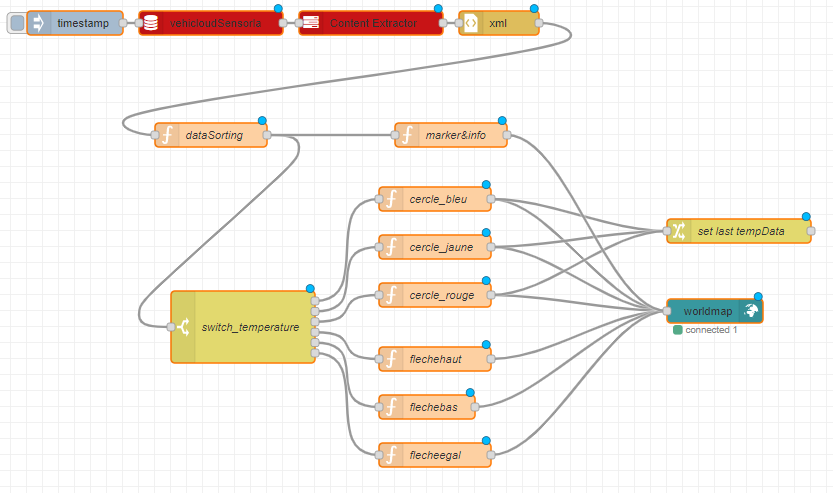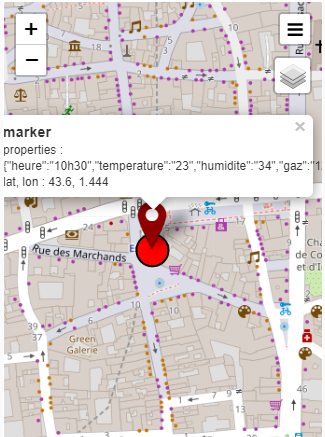Today, our cities have many disparities regarding the distribution of heat, pollution, and humidity. These disparities can be the cause of issues such as localised peaks in heat and pollution, known as heat islands.
What's the problem?In urban areas, pollution is mainly caused by human activity such as industry and transportation.
- Urban pollution affects negatively the air quality inside our homes as well as the air that we breathe outdoors : air pollution has a major impact on the process by which plants grow by preventing photosynthesis in many cases, with serious consequences on the purification of the air we breathe.
- The accumulation of gases in the atmosphere also generates environmental issues with consequences such as acid rain, depletion of the ozone layer, global warming, the greenhouse effect, etc. The concentration of these gases in the atmosphere, mainly CO2, increases on average by 1% per year. This phenomenon is due to the properties of certain gases (carbon dioxide, methane, nitrous oxide, ozone and chlorofluorocarbons) that trap heat from the sun inside the atmosphere, preventing it from returning to space after being reflected on Earth.
- Air pollution contributes to the formation of acid rain : atmospheric precipitation in the form of rain, frost, snow or fog, which contains harmful chemical compounds. These compounds are released during combustion of fossil fuels and transformed on contact with water vapor in the atmosphere. Acid rain affects the amount of chemicals in soils and freshwater, affecting food chains and natural ecosystems.
- Our continued exposure to these air pollutants is responsible for a measurable deterioration of human health
- Air pollution can cause cardiovascular problems, allergies, asthma attacks, conjunctivitis, bronchial diseases, lung or skin cancers, vision problems, problems in the mental development of a child, among others. The most vulnerable of us are children, the elderly, pregnant women and the sick.
We need to understand the sources of pollution in urban environments and create indicators to properly manage and track the evolution of urban pollution. Thanks to these metrics, we can evaluate which solutions should be priviledged, with the aim of tracking the effectiveness of policy on a local level.
We believe that creating good policy depends on the following factors :
- Having access to close to real-time data regarding pollution indicators and metrics
- Having a huge amount of data to find the main origin of the pollution
- Having a suitable data coverage of the city
Instead of installing very precise, fixed and expensive sensors in the city, we aim to implement small embedded systems on all the city-bikes. People, while riding bikes, will traverse the entire city regularly and provide sufficient coverage. The sensors must work with low energy consumption. The aim is to create a functional and compact system, easily integrable to the chosen transportation. Ideally, power supply will be provided by a dynamo for the bike borne version, charging batteries on velib park station is also considered.
Our devices must be cheap. This characteristic is necessary so that many can be assembled, and the loss of an individual unit is not an issue in our coverage.
Our devices must be able to collect different data points and therefore be able to put into use different sensors. We must also be able to develop a backend solution to extract these different data points in order to present them in a high level application such as a dashboard.
We have attempted to address these specifications with our work-in-progress PoC.
For this PoC, we have designed a single device and created both it's backend as well as it's front end components for use in real time. This device exploits the oM2M protocol in it's architecture, communicates according to the IEEE 802.11 standard thanks to HTTP.
Our solution architecture is seperated into three levels :
- Our physical device, our Application Entity, is an ESP32 that interfaces with multiple sensors (such as the Grove particle sensor, humidity, temperature sensors as well as a GPS sensor).
- The ESP 32 (AE) communicates with a RaspberryPi (MN) thanks to HTTP requests, which in turn connects to a PC that acts as a server (IN).
Our data is collected thanks to an arduino code flashed onto the ESP, that then sends our data in an HTTP request to the middle node. In a real world application, our middle node could be the bike station which recovers the bike, which would simplify the implementation because bike stations are already connected to a network. The data being sent to the middle node is contained within a single HTTP request. Having the data of different sensors sent as an array within a single data frame allows for quick transmission.
Any content instance containing data that is sent to a Gateway (RaspberryPi acting as an MN) will automatically send that content instance to the Server (IN) thanks to a subscription ressource that notifies a Java application that in turn creates an HTTP POST request onto the IN. This way, we create a way to automatically pipeline the data up to the server.
When the bike is returned all the data that is stocked locally is sent to the station (MN) and the station then transfers it to the server (IN) where all the data is gathered and exploited.
We use NodeRed to extract and differentiate the individual data points, corresponding to different data extracted from different sensors. This way, we "unpack" our data frame and extract the relevant information to program a high level application. This high level application is a heatmap of our different data points over a map of our city. This way, the latitude and longitude fields of our data frame will be used to position our data point, and other fields will be displayed. Different fields of the same data frame will therefore follow a different processing chain. From this data we create real time maps displaying where temperature is the highest and where pollution is concentrated. Decision makers will be able to be precise in their actions, down to a neighborhood scale.
We believe that large scale real time data collection will make a difference from a smart city point of view.
Identifying heat points, heavy pollution locations and monitoring transports is key in order to improve air quality and peoples mobility. This data can focus the efforts where it needs to be focused. And avoid costly and time consuming decisions. This is the whole idea behind our project : give a tool to those making decisions so they can make efficient decisions and justify them with real world information.
Using the oneM2M standardisation in our solution architecture allows for the creation of a scalable and interoperable system. The three level architecture it proposes is particularly adapted to the IoT architechture.





















Comments
Please log in or sign up to comment.